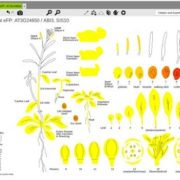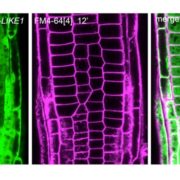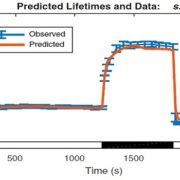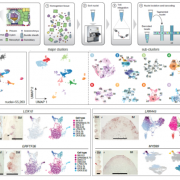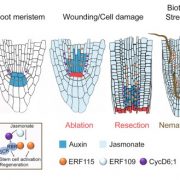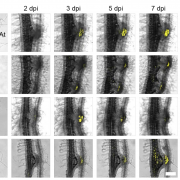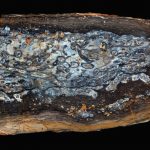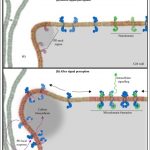From plasmodesma geometry to effective symplasmic permeability through biophysical modelling (eLIFE)
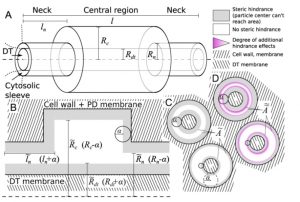 Plasmodesmata are tiny regulated channels that connect adjacent plant cells through which nutrients, signaling molecules and viruses can move. To try to resolve discrepancies between functional and structural studies, Deinum et al. have developed a model for plasmodesmatal permeability that predicts transport data. How do structural variations in plasmodesmata such as neck diameter and the presence of desmotubules affect transport? Are they affected by nearby neighboring plasmodesmata, or does each operate fully independently? The authors base their models on concentric cylinders of various geometries and various degrees of steric hinderance. They consider the flow through single plasmodesmata as well as the effect of cytoplasma surrounding them. Their model can be applied to estimate wall permeability based on measured plasmodesmatal sizes and densities. (Summary by Mary Williams) eLIFE 10.7554/eLife.49000
Plasmodesmata are tiny regulated channels that connect adjacent plant cells through which nutrients, signaling molecules and viruses can move. To try to resolve discrepancies between functional and structural studies, Deinum et al. have developed a model for plasmodesmatal permeability that predicts transport data. How do structural variations in plasmodesmata such as neck diameter and the presence of desmotubules affect transport? Are they affected by nearby neighboring plasmodesmata, or does each operate fully independently? The authors base their models on concentric cylinders of various geometries and various degrees of steric hinderance. They consider the flow through single plasmodesmata as well as the effect of cytoplasma surrounding them. Their model can be applied to estimate wall permeability based on measured plasmodesmatal sizes and densities. (Summary by Mary Williams) eLIFE 10.7554/eLife.49000


